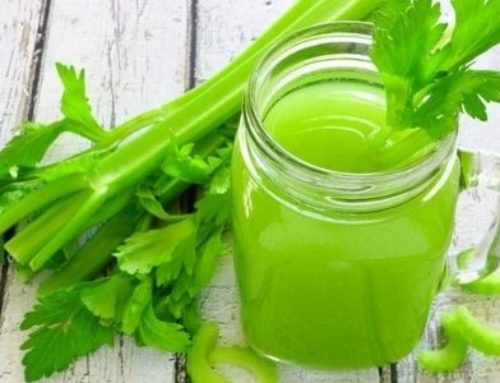
We’ve all heard the mantra “eat whole foods”. You are also probably aware that 95% of health care practitioners recommend you get most of your calories from whole foods.
The simple reason. They’re nutrient dense. Meaning we get more vitamins, minerals, fibre and phyto-nutrients per calorie. Which is good from a health perspective, as it means that we’re avoiding deficiencies and giving our body the chance to function at it’s best.
But, like I said, most of us are aware of that.
What’s less understood and appreciated is just how powerful whole foods can be when it comes to fat loss.
No, I’m not talking about that one food that increases fat burning by 200%! Although they do require a bit more energy to breakdown, digest and absorb.
What I’m actually referring to is their ability to help us regulate our calorie intake.
That’s right, while whole foods may only have a small direct role in helping with fat loss, they play a number of indirect roles which can make your fat loss journey easier and potentially more successful.
What are these indirect roles I talk of?
Increased satiety
Satiety is the feeling of fullness that lasts for a period after a meal. Thus, a satiating meal will make you feel full for less calories and stop you feeling hungry for longer.
Which is a big deal considering hunger is one of our biggest enemies when it comes to consistently sticking to an energy budget.
Typically, during a diet, we see food portions reduce in an effort to reduce calories.
This leads to stretch receptors in our stomach receiving less stimulation and thus a message to the brain that we aren’t satiated.
When we look at what increases satiation, there are a few key players:
- Fibre
- Water content
- Protein
- Low energy density
Now you may have started to connect the dots already but here’s the kicker.
Whole foods typically tick a lot of those boxes.
They tend to be lower in energy density, higher in fibre, have more protein and have greater water content than highly processed foods. In fact, if we go to the other end of the scale, we can see that foods that have more processing tend to be lower in fibre, protein and fibre and be more energy dense.
Reduced Palatability
Palatability refers to the amount of pleasure we derive from a food. Foods that are non-palatable are often those we don’t enjoy that much (at least initially) and take us time to grow accustomed to e.g. kale.
On the other hand, hyper-palatable foods are those which we derive so much pleasure from that we find it hard to stop eating. E.g. Pizza, cookies, brownies etc.
When we consider what makes a food palatable, we know there are a few key factors.
- Sweetness
- Fat content
- Salt
And while any one of these factors can make a food more palatable, when we combine the three, we really kick things up a notch.
Foods that have added and concentrated forms of sugar, fat and salt tend to override our bodies natural appetite regulation system, meaning we can eat a ton of energy and never really feel full.
That’s why we can eat a block of chocolate, a tub of ice cream or a whole pizza with relative ease. Try to eat the equivalent amount of whole foods and you’re either going to get very full before you’ve reached halfway or lose interest in your food.
As an interesting side point, we don’t find foods that combine the above factors in nature. We find sweet (honey, fruit etc.) and fatty (nuts, meat and animal cuts) foods, but very rarely combined.
In fact, the only foods that we do see that tend to combine significant amounts of carbs and fats are milk and acorns. Both foods consumed by animals during periods of rapid weight gain. (Bears eat large amounts of acorns prior to hibernation to help them gain weight to last them through the winter).
Reduced Cravings
Following on from point 2, we also know that minimally processed foods don’t tend to invoke the same kind of cravings as ultra-processed foods.
That’s because cravings are a conditioned response.
When we consume a food that our brain finds rewarding, our brain will then motivate us to seek this food again. It accomplishes this by associating certain cues with that meal such that when we experience those cues in the future it triggers our brain to seek that food.
For example, say the first time you had a warm chocolate chip cookie was at your grandma’s house. That first experience your brain is collecting a ton of data. The smell of cookies fresh from the oven, the emotions you felt at the time, the location, the people, the sounds, the sight of the cookies, that first bite and taste.
Your brain then connects these cues with the feeling of pleasure and reward, so that now you salivate when you smell cookies, you crave cookies when you go to your grandparent’s house or even think about their house. Those cues are now triggering which initiate cravings.
The point is, we form these associations much quicker and stronger the more rewarding a food is.
That’s why you are much more likely to get a craving for chocolate than a craving for baby spinach or broccoli. (God wouldn’t that be helpful)
By increasing the amount of whole foods in the diet and reducing the amount of ultra-processed foods, we tend to see cravings subside over time.
These 3 factors in-directly play massive roles in helping us to regulate our intake. When we choose less processed foods we’re making it a lot easier on ourselves to consistently stick to our energy budget and therefore see better and more reliable results.
It’s also why it’s one of the first things we focus on in consultations. Because if you’re eating mostly whole foods, then a lot of the small details also tend to fall into line.
If you’re struggling to stick to your plan or just looking to start making smart changes with your eating habits then working on increasing the amount of whole foods within your diet is a great starting point.
If you’d like further help with your nutrition click below:





